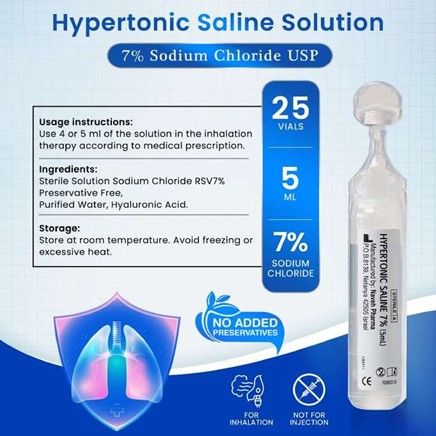A client is admitted with hyponatremia.
Which of the following interventions should the nurse prioritize for this client?
Restricting fluid intake.
Administering a hypertonic saline solution.
Encouraging increased fluid intake.
Administering a loop diuretic.
The Correct Answer is B

This is because hyponatremia is a condition where sodium levels in your blood are lower than normal, usually due to too much water in your body that dilutes the sodium. A hypertonic saline solution is a fluid that has a higher concentration of sodium than blood, and it can help restore the normal sodium balance by drawing water out of the cells.
Choice A is wrong because restricting fluid intake may not be enough to correct severe hyponatremia, and it may worsen the symptoms of dehydration.
Choice C is wrong because encouraging increased fluid intake will further lower the sodium levels and increase the risk of complications such as brain swelling.
Choice D is wrong because administering a loop diuretic will cause more sodium and water loss from the kidneys, which can worsen hyponatremia and dehydration.
Normal ranges for blood sodium levels are between 135 and 145 milliequivalents per liter (mEq/L).
Hyponatremia is defined as a blood sodium level below 135 mEq/L1.
Nursing Test Bank
Naxlex Comprehensive Predictor Exams
Related Questions
Correct Answer is A
Explanation
Acute renal injury (ARI) is a term for a reversible syndrome that results in decreased glomerular filtration rate (GFR) and oliguria. GFR is a measure of how well the kidneys filter blood and oliguria is a condition of producing less than normal amounts of urine.
Choice B is wrong because chronic renal injury (CRI) is not a reversible syndrome, but a progressive loss of kidney function over months or years.
Choice C is wrong because end-stage renal disease (ESRD) is not a reversible syndrome, but a condition where the kidneys have lost most or all of their function and dialysis or transplantation is required.
Choice D is wrong because acute tubular necrosis (ATN) is not a term for a syndrome, but a specific type of acute kidney injury that involves damage to the tubules, the part of the nephron that reabsorbs water and solutes from the filtrate.
Correct Answer is ["A","B","C","E"]
Explanation
Choice A reason: This hypotonic saline solution is often used after initial resuscitation, especially when the patient’s serum sodium is normal or elevated. It helps replace intracellular fluid losses and provides ongoing hydration without excessively increasing sodium levels. It is typically administered once the initial intravascular volume is restored with isotonic fluids.
Choice B reason: This isotonic saline solution is the first-line intravenous fluid used in DKA. It helps expand intravascular volume quickly, restore tissue perfusion, and correct hypovolemia caused by osmotic diuresis. It is given initially as a bolus, followed by continuous infusion until the patient is stabilized.
Choice C reason: This dextrose-containing solution is introduced once blood glucose falls to approximately 200–250 mg/dL. At this point, insulin therapy must continue to clear ketones and correct acidosis, but dextrose is added to prevent hypoglycemia. It is usually combined with saline (e.g., D5 0.45% NS) to balance hydration and glucose support.
Choice D reason: This balanced electrolyte solution is not typically the preferred fluid in DKA management because the lactate component may complicate interpretation of acid–base status. Although it can expand volume, it is generally avoided in favor of saline solutions that more directly address dehydration and electrolyte imbalance in DKA.
Choice E reason: This form of insulin is the only type used intravenously in DKA. A continuous infusion of regular insulin is essential to reduce blood glucose, suppress ketone production, and correct metabolic acidosis. It is carefully titrated with close monitoring of electrolytes, especially potassium, since insulin drives potassium into cells and can cause hypokalemia.
Whether you are a student looking to ace your exams or a practicing nurse seeking to enhance your expertise , our nursing education contents will empower you with the confidence and competence to make a difference in the lives of patients and become a respected leader in the healthcare field.
Visit Naxlex, invest in your future and unlock endless possibilities with our unparalleled nursing education contents today
Report Wrong Answer on the Current Question
Do you disagree with the answer? If yes, what is your expected answer? Explain.
Kindly be descriptive with the issue you are facing.
